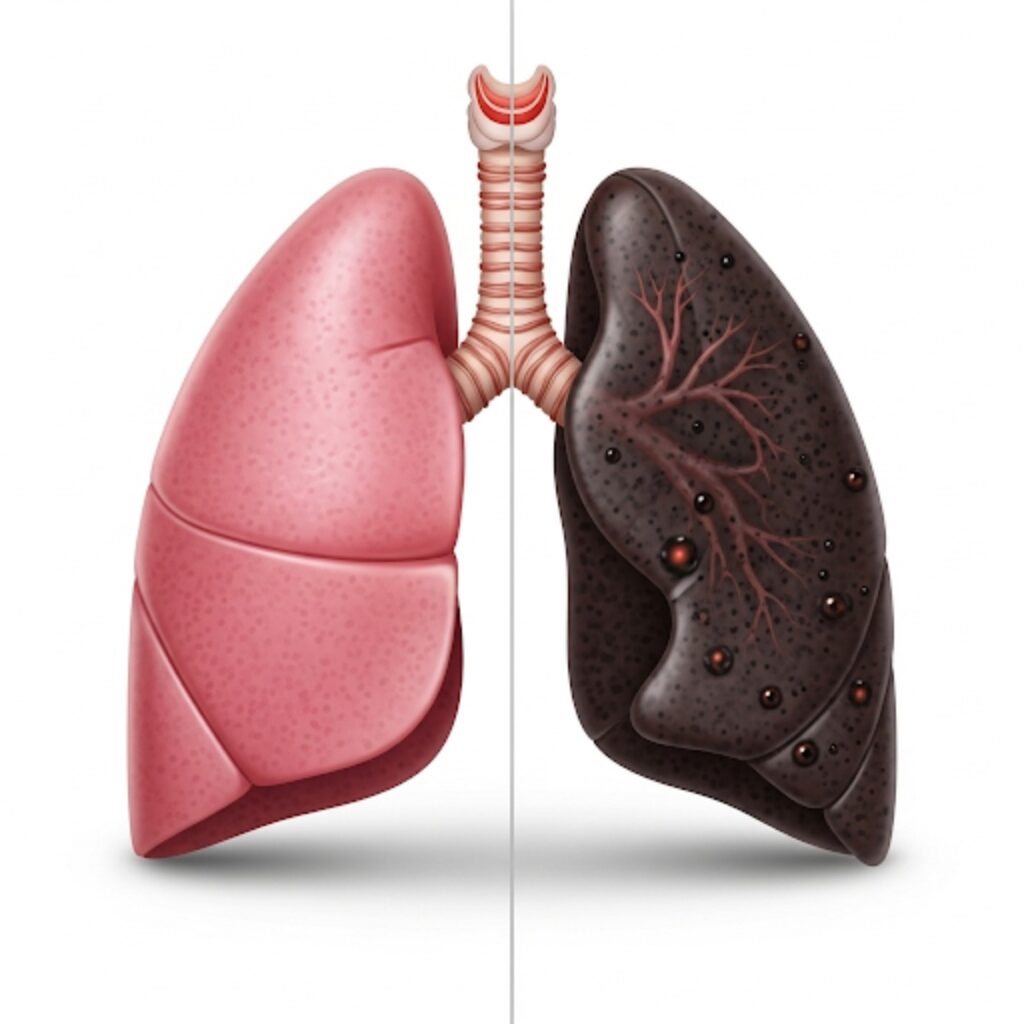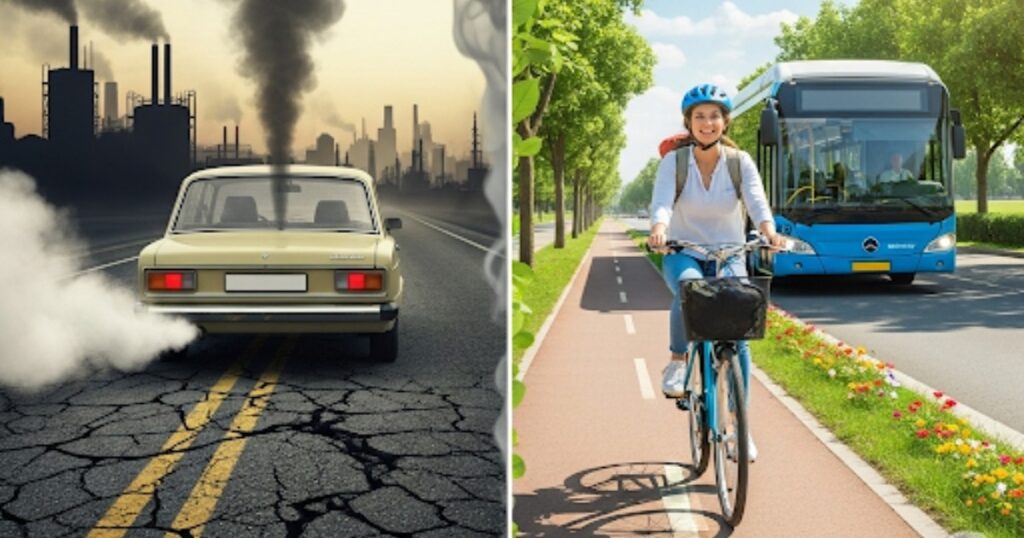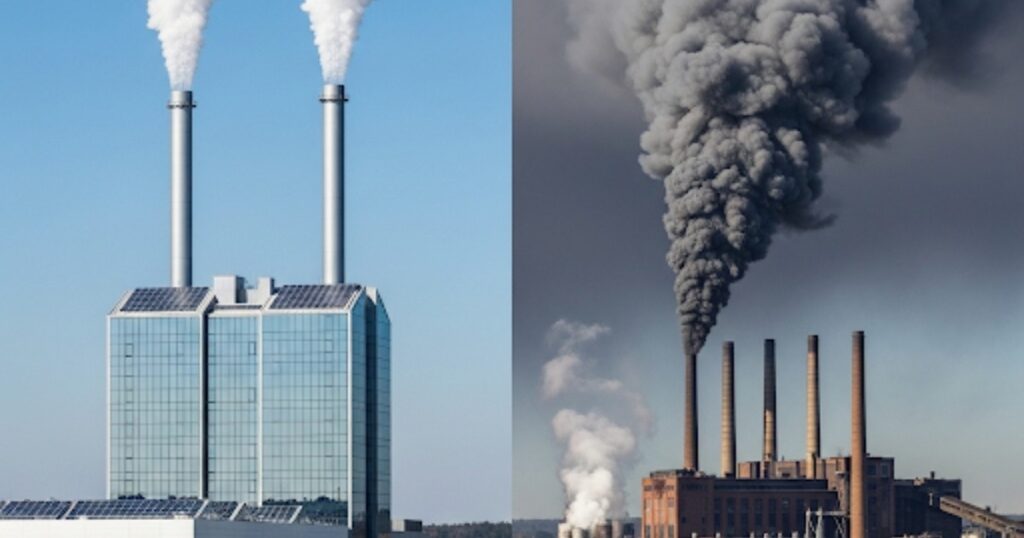Air pollution is a global challenge affecting the health of every individual and the environment. It comes from a variety of sources, including vehicle exhaust, industrial emissions, and even household activities. The World Health Organization reports that 99% of the world’s population breathes air that exceeds air quality guideline limits, with low- and middle-income countries suffering the highest exposures.
This pervasive issue demands collective action, from major government policies to small changes in daily routines. By understanding the sources and implementing effective solutions, we all have the power to contribute to cleaner air.
This article provides 20 practical and impactful ways to reduce air pollution, offering a comprehensive guide for anyone wanting to make a difference.

Individual Ways to Reduce Air Pollution at Home and in the Community
Taking personal responsibility is a crucial first step in the fight against air pollution. Simple shifts in your daily habits can lead to significant reductions in your carbon footprint and the pollutants you release. These changes are easy to implement and do not require major life alterations. The combined effort of many individuals creating these small changes has a monumental impact.
How to Reduce Air Pollution with Daily Habits
Reducing your personal energy consumption is one of the most effective solutions. Much of the electricity and heat we use are generated by burning fossil fuels. This process releases harmful gases into the atmosphere. You can lower your energy use by making conscious decisions throughout the day. For instance, turn off lights and electronics when you leave a room. Unplug devices that are not in use to prevent them from drawing phantom power. Adjusting your thermostat by a few degrees in both winter and summer can also lead to noticeable energy savings.
Switching to energy-efficient appliances and light bulbs is another powerful step. Look for products with the ENERGY STAR label, which are certified to use less energy without sacrificing performance. Replacing traditional incandescent bulbs with LED lights saves a significant amount of electricity. These small changes help conserve energy and reduce the demand on power plants, directly leading to a decrease in industrial air pollution.
Eco-Friendly Ways to Reduce Air Pollution
A sustainable lifestyle extends beyond energy. Opting for non-toxic, eco-friendly cleaning products prevents the release of volatile organic compounds (VOCs) into the air. These chemicals can contribute to smog and are hazardous to your health. You can even make your own cleaners with simple ingredients like vinegar and baking soda.
The concept of “reduce, reuse, recycle” is a fundamental principle for a greener life. Reducing consumption of new goods lowers the demand on manufacturing industries, which are often major sources of pollution. Reusing items and recycling materials like glass, paper, and plastic conserve the energy and resources that would otherwise be spent on creating new products from raw materials.
Solutions to Reduce Air Pollution from Transportation
Transportation is a leading contributor to air pollution in urban centers. Vehicle exhaust releases particulate matter, nitrogen oxides, and carbon monoxide, all of which are harmful to human health. By rethinking your commute and travel habits, you can play a direct role in creating cleaner air in cities.
How to Reduce Vehicle Air Pollution
The most direct way to reduce vehicle air pollution is to drive less. For short trips, consider walking or cycling. These options are not only pollution-free but also provide great health benefits. If walking or biking is not feasible, use public transportation like buses and trains. A single bus can take dozens of cars off the road, dramatically reducing emissions per person.
Carpooling with colleagues, friends, or neighbors is a simple way to decrease the number of cars on the road during peak hours. If you must drive, consider a fuel-efficient or electric vehicle. Electric vehicles have no tailpipe emissions, which significantly reduces local air pollution.

Maintaining your vehicle properly also reduces its emissions. Regular tune-ups, oil changes, and tire pressure checks ensure your engine runs efficiently. An engine that is not properly maintained burns more fuel and releases more pollutants. Avoid excessive idling, as this wastes fuel and contributes to air pollution unnecessarily. Modern vehicles do not require a long time to warm up.
Steps to Reduce Air Pollution in Cities
Systemic changes in cities are necessary to combat widespread air pollution. These efforts require coordinated action from city planners, governments, and businesses to create a healthier urban environment.
Government Policies to Reduce Air Pollution
Governments can implement policies that drive large-scale change. One example is the establishment of low-emission zones in city centers, where only electric or low-emission vehicles are permitted. This action reduces traffic-related pollution in crowded areas. Investing in and expanding public transportation networks makes it easier for citizens to choose alternatives to driving.
Another important step is enforcing stricter emission standards for both vehicles and industries. In Nigeria, for instance, the National Action Plan to Reduce Short-Lived Climate Pollutants (SLCPs) aims to mitigate emissions from various sectors, including waste and oil and gas operations. Such policies hold polluters accountable and encourage the adoption of cleaner technologies.
How to Reduce Industrial Air Pollution
Industries are major sources of pollutants. Factories and power plants emit large quantities of sulfur dioxide, nitrogen oxides, and particulate matter. Encouraging industries to adopt cleaner production methods is critical. This includes switching from coal or oil to cleaner fuels like natural gas or, better yet, to renewable energy sources such as solar and wind power.
Implementing pollution control technologies, like scrubbers and electrostatic precipitators, can capture pollutants before they are released into the atmosphere. Governments can offer incentives for companies that invest in these technologies. The shift towards a circular economy, which minimizes waste and maximizes resource efficiency, also reduces the environmental impact of industrial activities.

Reducing Air Pollution in the Environment and at School
Our environment and public spaces like schools are also key areas where we can focus our efforts to reduce air pollution. Protecting these spaces involves both individual and collective action, from planting trees to educating the next generation.
How to Stop Air Pollution Naturally
Nature provides powerful tools for air purification. Planting trees is one of the most effective natural solutions. Trees absorb carbon dioxide and other pollutants, while also releasing oxygen. Urban green spaces, including parks and green roofs, improve local air quality and reduce the urban heat island effect, which can intensify smog formation. A 2024 study by Stanford researchers highlighted that strategic tree planting in cities can significantly lower local air pollution levels.
Composting organic waste is another natural way to help. When food scraps and yard waste are sent to landfills, they decompose and release methane, a potent greenhouse gas. Composting at home or participating in a community composting program diverts this waste and turns it into valuable soil. This practice prevents methane from entering the atmosphere and reduces the need for chemical fertilizers, which can also contribute to air pollution.
Reduce Air Pollution at School
Schools are vital communities where we can instill lasting habits and create clean air zones. Encouraging active transportation for students and staff, such as walking or cycling to school, reduces traffic congestion and vehicle emissions during peak drop-off and pick-up times. Creating a “no idling” policy for cars waiting in the school parking lot also helps.
Educating students on the importance of clean air and simple actions they can take empowers them to become advocates for the environment. Schools can incorporate environmental studies into the curriculum and organize events like tree-planting drives. Using reusable containers for lunch and promoting recycling programs on campus are also great ways to reduce the school’s overall environmental impact and set a positive example for students.

Frequently Asked Questions
What are the main causes of air pollution?
The main causes of air pollution include vehicle exhaust from cars and trucks, industrial emissions from factories and power plants, agricultural activities, and burning waste or fossil fuels for household energy. These sources release harmful gases and particles into the atmosphere, which contribute to the global air pollution crisis.
How can I make a difference in reducing air pollution?
You can make a significant difference by taking personal actions. Drive less by walking, biking, or using public transport. Conserve energy at home by turning off lights and unplugging electronics. Choose sustainable products and support companies committed to reducing their environmental footprint. These individual ways to reduce air pollution add up to create a large collective impact.
Do government policies really help with air pollution?
Yes, government policies are essential for driving large-scale change. Strict emission standards for vehicles and industries, investments in public transportation, and the promotion of renewable energy sources all play a critical role. Policies like those in Nigeria targeting short-lived climate pollutants demonstrate a commitment to systemic solutions that benefit everyone.
What are some easy ways to prevent air pollution at home?
Easy ways to prevent air pollution at home include using a fan instead of air conditioning when possible, opting for non-toxic household cleaners, and ensuring your home is well-insulated to reduce the need for heating and cooling. These simple tips to reduce air pollution at home can lower your energy use and improve indoor air quality.
Why is planting trees an effective way to reduce air pollution?
Planting trees is a highly effective, natural solution. Trees absorb carbon dioxide and other pollutants through their leaves. They act as natural air filters, trapping harmful particles and helping to purify the air. This makes urban forestry a critical strategy for combating air pollution in cities and towns.



